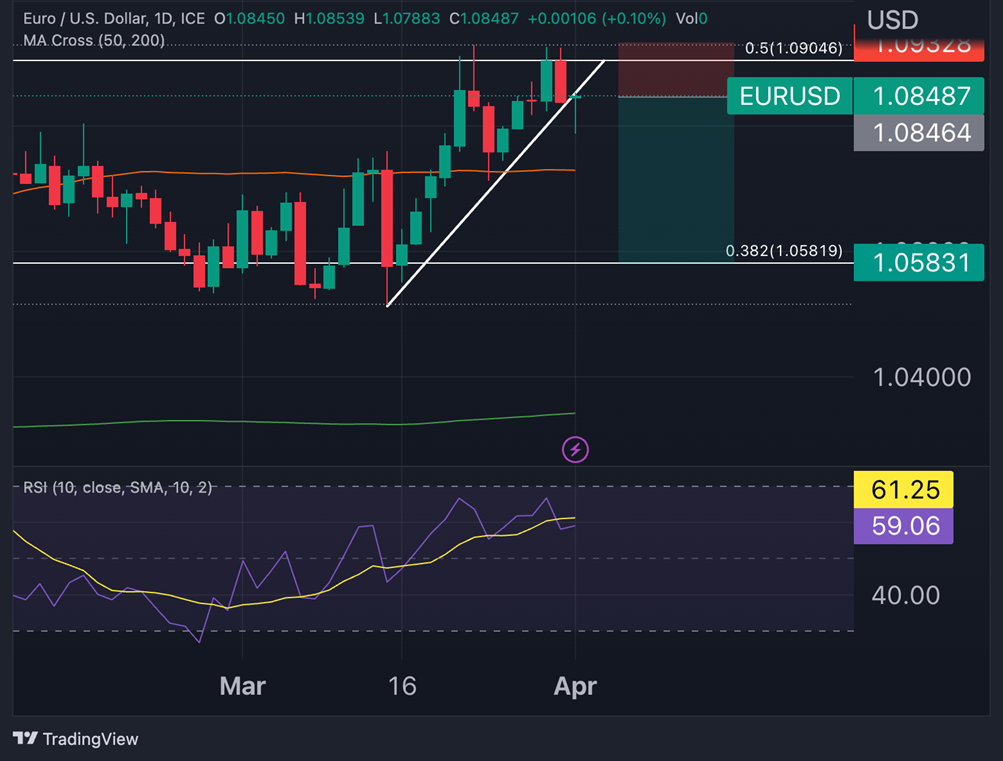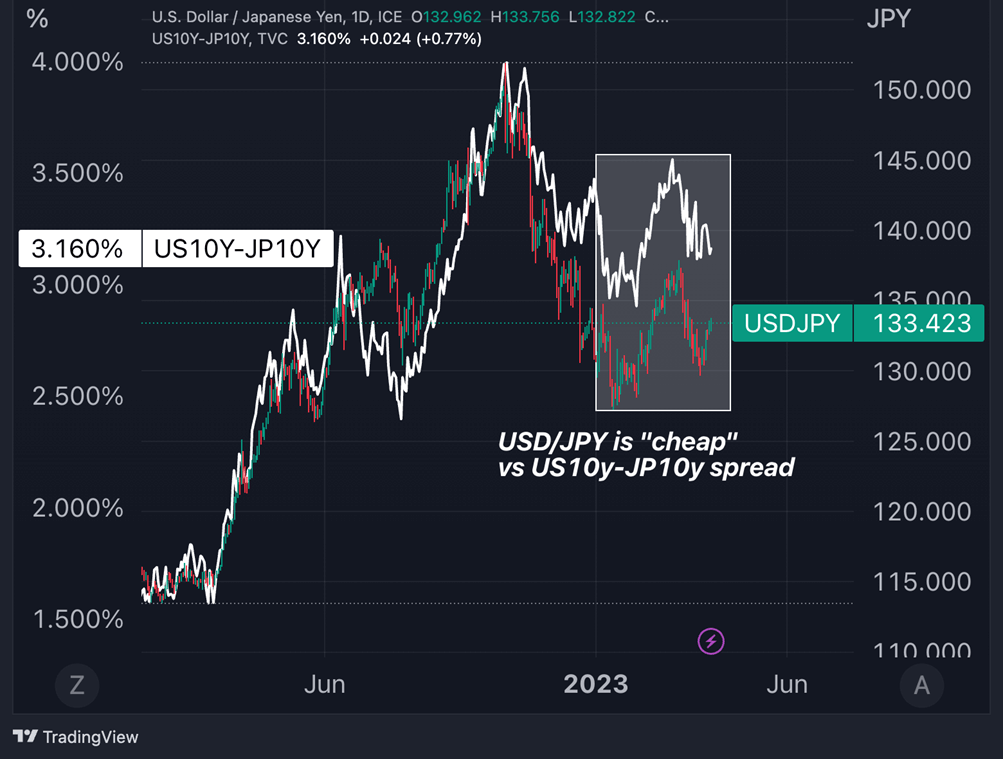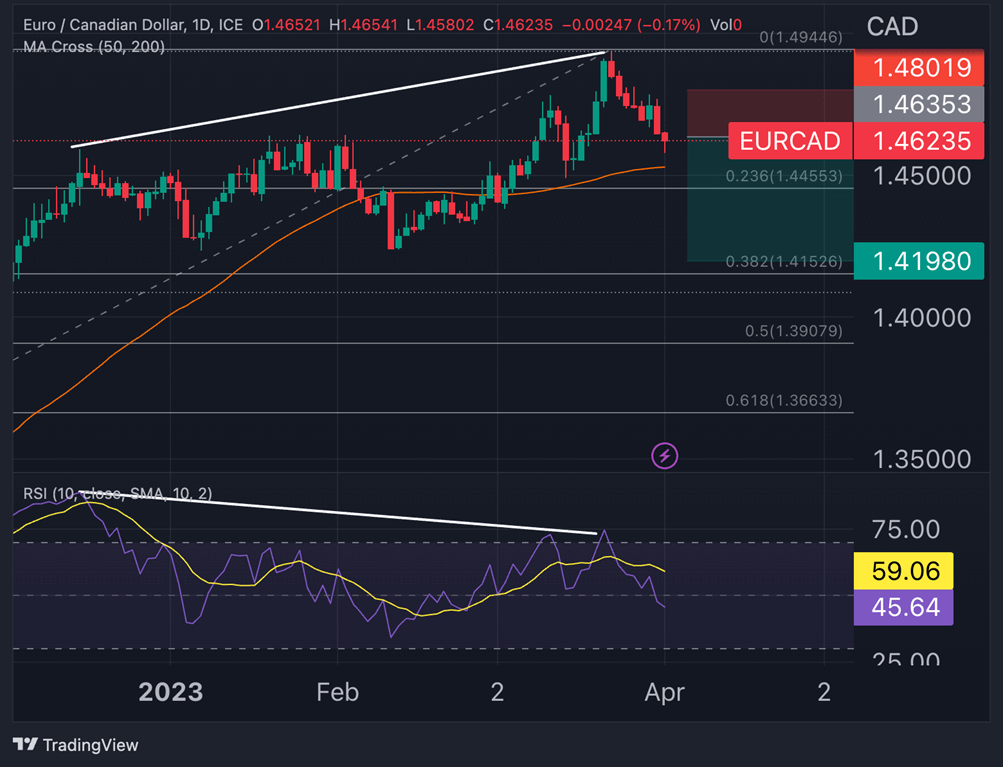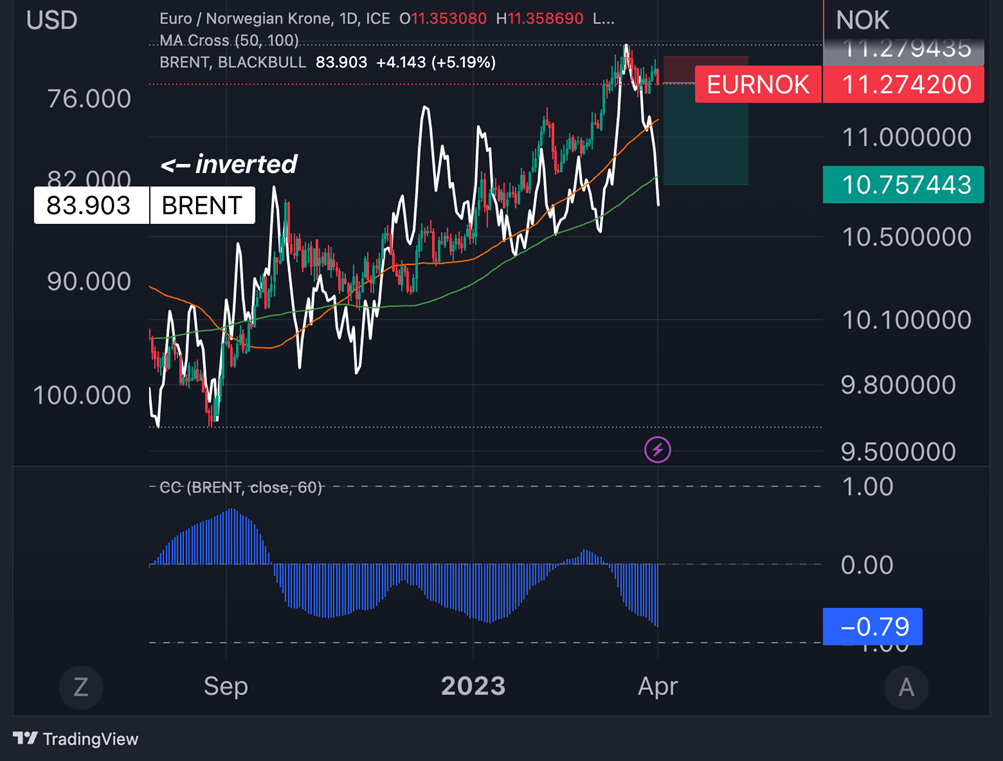Markets have been on a roller coaster ride. Here are our latest forex trading ideas.
Markets overview
The first week of April begins with a surprise shock as the OPEC+ oil producer cartel agreed on production cuts of roughly 1.16 million barrels per day this year, sending WTI oil prices more than 6% over $80 per barrel. This comes at a time when the United States Strategic Petroleum Reserve stockpiles are at their lowest level since 1983, and the administration has already signaled that they would need to be replenished this year.
The OPEC+ decision is also expected to have numerous and significant market ramifications. In the FX space, Commodity-linked currencies may surge against currencies of crude oil importing countries. The Norwegian krone (NOK) and Canadian dollar (CAD) have the strongest link with oil prices and are likely to benefit the most from the oil rally as opposed to the euro (EUR), Swiss franc (CHF), and Japanese yen (JPY).
The OPEC+ decision also poses the risk of reigniting inflationary worries, forcing central banks, particularly the Fed, to continue hiking interest rates.
If this happens, the recent rally in risky assets, which has been fueled by anticipation of a Fed pivot amid easing inflationary pressures, might be paused and possibly reversed.
According to the most recent CME Group FedWatch tool, markets are now pricing in a roughly 60% possibility of a quarter-point rate rise in May.
On the data front, traders are now eyeing a series of key US economic prints this week, including the ISM Manufacturing PMI on Monday, job openings data on Tuesday, the ISM Services PMI and ADP private payrolls report on Wednesday, and the crucial monthly non-farm payrolls report on Friday.
Here are the trading ideas for the week, looking at currency pairs: EUR/USD; USD/JPY; EUR/CAD; EUR/NOK.
EUR/USD Trading Strategy: A Likely Retracement of The March Rally
Short EUR/USD: Target Price 1.058; Stop Loss 1.0932. Risk-reward ratio of 3.05.

The rise in the price of crude oil is bullish for the dollar and bearish for the euro, considering the terms of trade between the two economic areas.
Furthermore, the rise in oil costs may prompt the Fed to stay hawkish and continue raising rates, benefiting the dollar.
The euro's brief rally from March 15 is therefore now under scrutiny, and it is already possible to witness a break of this bullish trend, with a subsequent negative reversal for the pair.
Notwithstanding the dollar's bearish phase and the lowering of inflationary worries in the United States in recent weeks, EUR/USD has failed to close above 1.095, the 50% Fibonacci retracement of the 2021-2022 high-to-low range.
The inability to move over 1,095 might be regarded as the bullish wave of the pair reaching exhaustion.
The pair broke through the March bullish trendline overnight on Monday, April 3, with the 10-day RSI beginning to contract southwards.
If we get aggressive Fed remarks and solid US economic data this week, we believe the 50-day moving average (1.073) will be tested next, and 1.058 (38.2% Fibonacci) will be the target to monitor. The stop of the short might be set slightly above last week's high of 1.093.
USD/JPY Trading Strategy: Bullish Momentum Supported By Higher Yields
Long USD/JPY: Target Price 140; Stop Loss 132.2; Risk-reward ratio of 4.42

USD/JPY is once again a proxy on interest rate differentials between the United States and Japan, and rising global energy prices are likely to further widen these differences.
The Bank of Japan stated last week that increasing rates on Japanese 10-year government bonds will result in massive losses on the central bank's balance sheet. This is certainly a "dovish" statement, with the potential to lock 10-year JGBs yield to a high of 0.5%.
Nominal 10-year Treasury yields might now climb in response to two drivers: growing inflation expectations (or breakeven rates) and rising expectations for the Fed's hikes (or real rates).
USD/JPY is already trading at lower levels than the rate spread between Treasuries and JGBs would suggest.
As a result, we think the USD/JPY exchange rate is likely to realign with the US-Japan government spread.
If we get hawkish comments from Fed officials this week, additional advances in oil prices, and higher Treasury yields, the USD/JPY might soar to the 140 area. The stop loss might be set around 132.2 (30 March low), resulting in a risk-reward ratio of 4.42.
EUR/CAD Trading Strategy: Bulls Face Headwinds from Stronger Oil and Bearish RSI Divergence
Short EUR/CAD: Target Price 142; Stop Loss 148.1

A bearish view on EUR/CAD is supported by both fundamental and technical factors.
Rising crude prices are a lifeline for the oil-linked Canadian dollar, since the country's terms of trade are expected to improve in the coming months.
On the other hand, the gains that the euro has made also as a result of reduced global energy prices are likely to come to an end.
On March 22, we saw the formation of a bearish RSI divergence as the pair extended to new relative highs (1.4945) but the momentum indicator failed to do so.
This might be viewed as a sign of exhaustion for the upward trend that the pair has been experiencing since the end of August 2022.
The following key support levels to monitor are: 1.453 (50-day moving average), 23.6% Fibonacci retracement of the August-March high-to-low trend, and the 2023 low at 1.424.
We believe there are rational grounds for bears to attack 2023 lows and maybe continue lower to 1.415. The strategy's risk is a disorderly sell-off in risky assets, with negative second-round effects on oil prices and high-beta currencies like the CAD. The stop might be set at the previous week's high of 148.1.
EUR/NOK Trading Strategy: A Brent Play
Short EUR/NOK: Target Price 10.75; Stop Loss 11.42; Risk-reward-ratio of 3.75.

In comparison to what Brent oil prices would imply, the euro is trading at a premium to the Norwegian krone.
There is an opportunity for the EUR/NOK pair to move lower on the back of a fundamental realignment.
The 60-day rolling correlation between EUR/NOK and Brent prices is -0.79, thus showing a significant negative link between the two assets.
Brent prices of $84 per barrel or higher imply EUR/NOK trading at 11 or lower.
10.75 is an intriguing target level to keep an eye on, since it is slightly below the 100-day moving average. The stop loss might be placed at the March high closing price of 11.42.
To delve deeper and discover the inner workings of the forex market, explore our comprehensive guide on Discover the Forex Market. This resource will provide you with valuable insights, market fundamentals, and the knowledge you need to navigate and potentially profit from this dynamic financial landscape.




